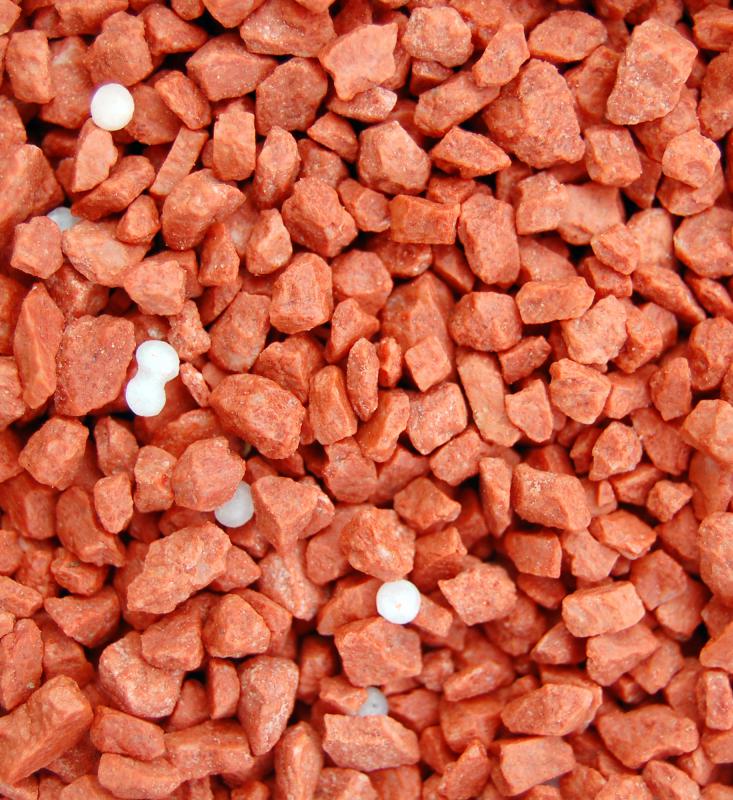At WiseGEEK, we're committed to delivering accurate, trustworthy information. Our expert-authored content is rigorously fact-checked and sourced from credible authorities. Discover how we uphold the highest standards in providing you with reliable knowledge.
How do I Choose the Best Grass for my Lawn?
When choosing the best grass for a lawn, it is important to first determine how much sun it will receive. It is best to select a species that is well suited for the area in which it will be grown, rather than trying to force it to grow in an unsuitable area. The best type for a shaded area is fescue. If the area will receive full sun, Bermuda grass is the better choice. If the area will receive very little or no fertilizer, centipedegrass might be the best choice.
When browsing through different types of grass, you will notice that the packaging often states whether it requires full sun, dense shade, or anything in between. These labels can, however, be a bit confusing. In general, a lawn requiring full sun should receive eight hours of unobstructed sunshine every day. One labeled as needing light shade requires six hours of sunshine that may or may not be filtered through tree leaves or pine foliage.

If the packaging says it requires partial shade, the lawn needs four hours of direct sunshine or eight hours of sunshine filtered through foliage. One that needs shade requires three hours of direct sunshine per day or all day sunshine filtered through tree leaves. A lawn that needs dense shade should receive no direct sunshine at all.
The amount of time you have available to tend to the lawn is another important consideration. Seeding grass is a less expensive option than sodding, but sodding provides more immediate results. When planting fescue, it is necessary to overseed it every two years, because creeping grass will cover the area otherwise. If the area to be covered is large and will receive little maintenance, common Bermuda or Kentucky 31 fescue are good choices. If the area is small and will receive a great deal of traffic, a sodded Bermuda or a turf fescue are better selections.

A turfgrass is available in two broad categories: warm season or cool season. A warm season variety needs to be planted in late spring or early summer, generally anytime from May to July. A cool season grass, on the other hand, should be planted in the fall from September through October.
AS FEATURED ON:
AS FEATURED ON:












Discussion Comments
What is the best time of year for planting grass? I have heard some people say fall and others say spring.
I would go into your local home and garden store and talk to the people who work there. When it comes to gardening advice it is usually best to tap into local expertise. They know about the climate and soil conditions that will affect your lawn better than anyone else.
@cloudel – Bermuda grass is terrible if you plan on doing any gardening. The man at my local garden center recommended it, but I chose zoysia grass instead.
Zoysia grass is so nice, because walking across it barefoot is like walking on carpet. It makes a yard feel like home, and I don't mind lying on the grass without a blanket.
I planted chunks of zoysia sod in my yard, and before too long, it had spread. It tends to choke out other weeds and grasses, because it is so dense. In fact, if you plant it in your yard, it might just choke out your dreaded bermuda grass!
I live about an hour and a half from the Gulf coast, so I have a grass in my yard that does well in sandy soil. Centipede grass has become my favorite kind.
It stays low to the ground, so I don't have to mow as often as my neighbors do. It just doesn't get very tall. It doesn't need watering often, so I usually just depend on the rain.
I have to say that I hate bermuda grass. It grows across the ground in long shoots and sends several roots down, and you have to yank them all up if you are weeding in your flower bed.
Bermuda grass can cut your hands if you are having to pull it up like this. It's pretty strong, and it is invasive. I would never plant it by choice.
It was already here when I moved in, so all I could do was pull it up around my plants and leave the rest. It just keeps coming back every few days! I'm going nuts because of it.
There is a lot of fescue grass in my neighborhood. This is probably because of all the trees people have in their yards.
I've seen it growing under large oaks and maples, but I rarely see any kind of grass directly underneath pine trees. They drop their leaves and cover the ground with natural mulch, and this blocks out the sun completely. I don't think anything can grow right underneath the pines.
Post your comments